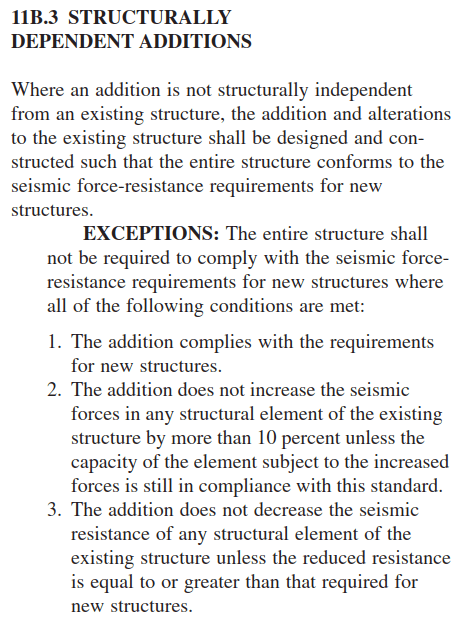Good day,
I am working on a project that requires to have a new Makeup Air Unit (MAU)installed on the roof top of an existing commercial building. The local Building Department requests to show the existing roof structure can support the weight of the new MAU (under 500 lbs.) as well as evaluating both wind and seismic load for the roof. My question is, seismic analysis of only the roof structure would not be sufficient enough because the force would need to be transferred to the bearing walls and to foundation, which seems to me a full seismic analysis of the entire commercial building. Since the project is only a tenant improvement of a suite within the entire building, should any seismic analysis be "overkilled" for such a small project?
Please share any experience that you may have working on tenant improvement project that require to have a new MAU installed on the roof top. My project is in Northern California.
Thank you.
I am working on a project that requires to have a new Makeup Air Unit (MAU)installed on the roof top of an existing commercial building. The local Building Department requests to show the existing roof structure can support the weight of the new MAU (under 500 lbs.) as well as evaluating both wind and seismic load for the roof. My question is, seismic analysis of only the roof structure would not be sufficient enough because the force would need to be transferred to the bearing walls and to foundation, which seems to me a full seismic analysis of the entire commercial building. Since the project is only a tenant improvement of a suite within the entire building, should any seismic analysis be "overkilled" for such a small project?
Please share any experience that you may have working on tenant improvement project that require to have a new MAU installed on the roof top. My project is in Northern California.
Thank you.

